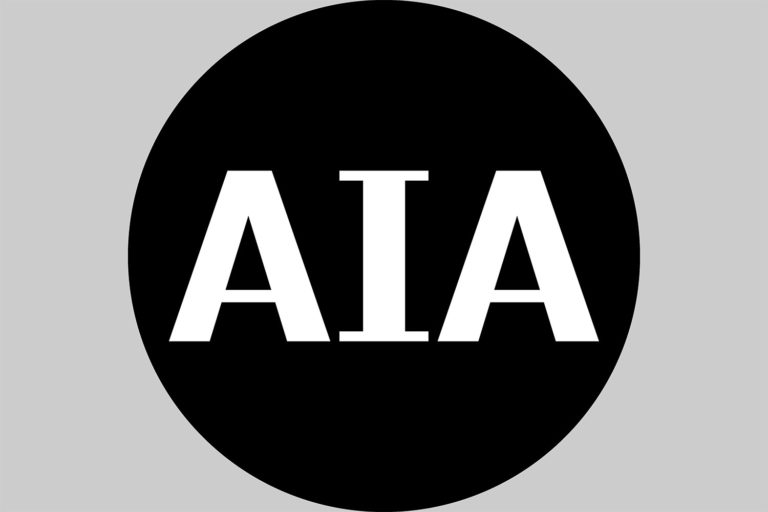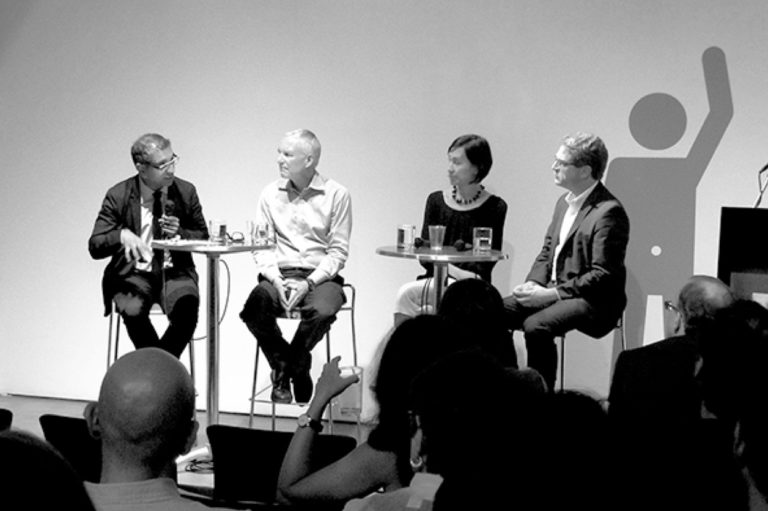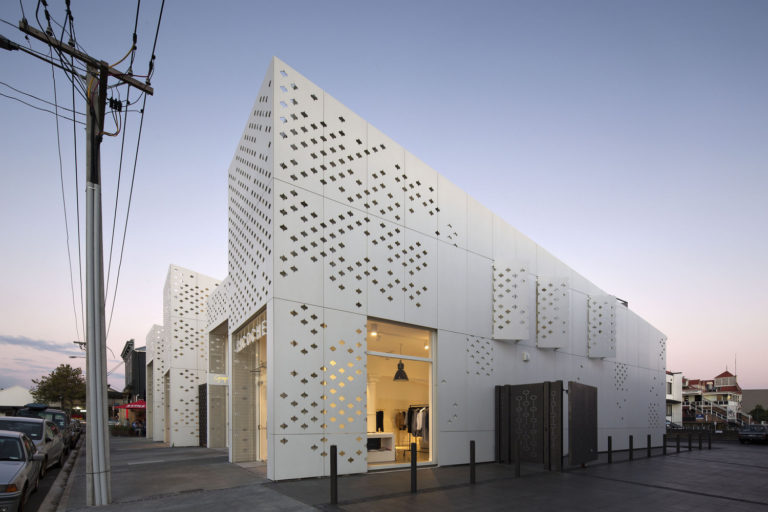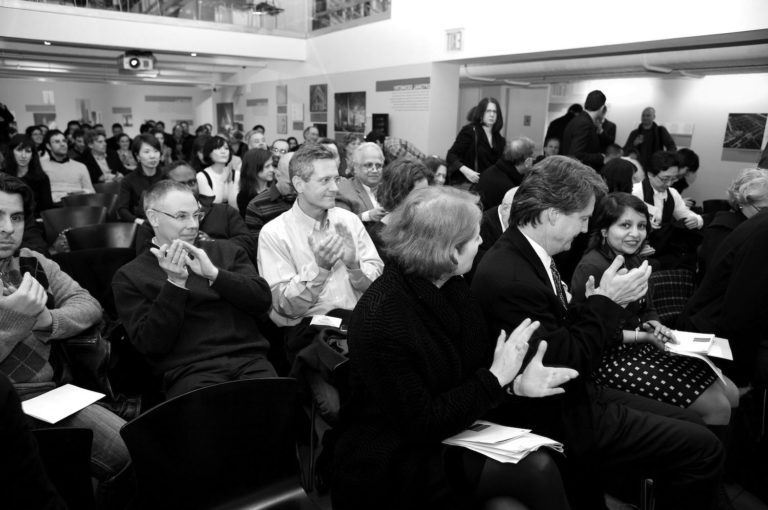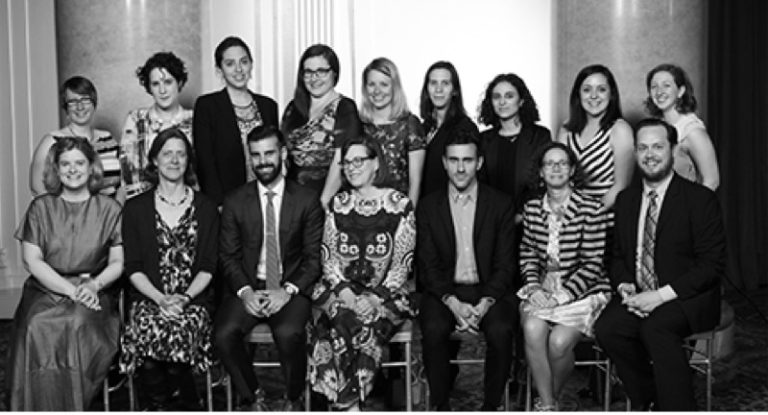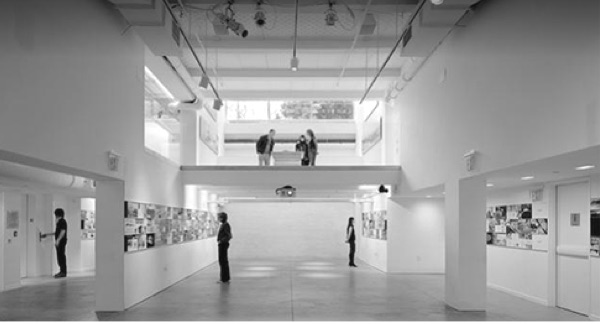by: Lisa Delgado
Event: Checkerboard Conversations: KieranTimberlake
Location: Center for Architecture, 10.28.10
Speakers: Suzanne Stephens — Deputy Editor, Architectural Record; Stephen Kieran, FAIA — Partner, KieranTimberlake; Introduction by Rick Bell, FAIA — Executive Director, AIANY
Organizers: Checkerboard Film Foundation; Center for Architecture; AIANY Architectural Dialogues Committee
This recent film screening and talk revealed Philadelphia-based KieranTimberlake to be at an intriguing juncture. Perhaps best known for its green prefab housing and academic buildings in the U.S., the firm is now poised to take on a higher international presence, through its (somewhat controversial) design of a new U.S. embassy building in London.
The event, the last of the Checkerboard Conversations series, began with a screening of director Tom Piper’s film KieranTimberlake: Loblolly House (2007), Cellophane House (2008). The documentary traces the story of the firm from its quiet beginnings to its rise in fame as research-focused innovators in sustainable architecture, epitomized by the Loblolly House (Kieran’s own residence in Taylors Island, MD) and the Cellophane House (a five-story structure commissioned for MoMA’s 2008 “Home Delivery” exhibition).
Designed as an experiment in streamlining the construction process, Loblolly House was their first foray into the techniques of prefabrication, or “off-site manufacturing,” as they prefer to term it. Thanks to the precision of parametric modeling, multiple components could be manufactured off-site at once, without fears that they wouldn’t fit together well. (Parts of the house were designed to tolerances of just one millimeter.) Elements such as “smart cartridges” — flat panels with multiple integrated components — allowed for easy assembly, and construction took just seven weeks. “The floor panels have radiant heating in them, microducted cooling, power for lighting, voice, and data — all of that comes loaded into these smart floor cartridges to just be plugged in at the house,” Stephen Kieran, FAIA, explained in the film. The residence is energy-efficient too, thanks to easily controlled natural ventilation that reduces the need for air conditioning. Though taller and more transparent, the Cellophane House is a direct descendant of the Loblolly House.
After the film Kieran presented a few other projects, such as Levine Hall at the University of Pennsylvania, and chatted with Suzanne Stephens, deputy editor of Architectural Record, about the embassy design. Some architects might seize upon a high-profile overseas commission as an opportunity for a grand aesthetic gesture, but instead KieranTimberlake chose a simple cubical shape (symbolic of a sense of permanence, and pragmatic in terms of daylighting).
Some critics have judged the design’s aesthetics harshly, but when Stephens asked Kieran for his reaction, he said, “I think the fundamental underlying reasons behind the criticism are that we were proposing… something that is part of an agenda to shift the underlying paradigm for how we make buildings.” For him, the ideal is to fuse aesthetics and performance inextricably, creating “an artful building” that’s also “an ethical building that exists on the highest level of performance possible.”
Lisa Delgado is a freelance journalist who has written for Oculus, The Architect’s Newspaper, Architectural Record, Blueprint, and Wired, among other publications.
